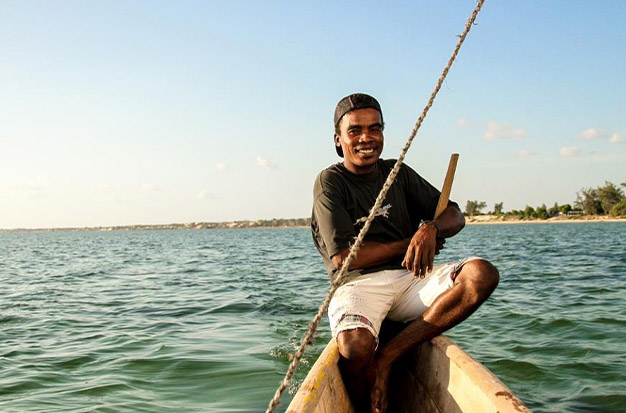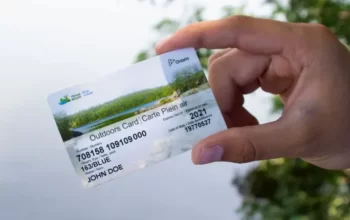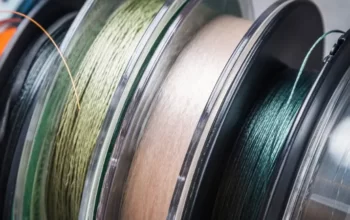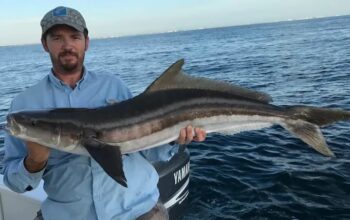Fishing takes place from a canoe. If you enjoy the simplicity of fishing with just the essentials, canoeing might become your new favorite pastime. It’s possible to fish from a canoe in freshwater rivers, lakes, or ponds. You can fish while using a kayak or stand-up paddleboard, which is a great way to get out on the water and appreciate the surrounding natural beauty.
We have what you need, whether you want to improve your fishing skills or simply spend a relaxing day at the lake.
Table of Contents
What Is A Canoe For Fishing?
Designed with Anglers in Mind: Canoes. With plenty of room for gear and tackle, fishing canoes let you get to where the fish are. When you choose an Old Town fishing canoe, you are selecting its renowned 3-layer polyethylene hull, which is designed to withstand the water.
Types Of Canoes For Fishing
Which canoe is best for your individual fishing needs will depend on the type of water and the type of fishing you intend to do.
Recreational canoes are frequently an excellent choice for lake fishing. A river canoe is what you need for river fishing, especially if you plan to navigate some minor rapids. Speed, strength, and stability are needed for ocean fishing. A multipurpose canoe with a pontoon attached would also work, but an outrigger canoe is the best option.
You can equip a canoe with an engine if you don’t enjoy paddling. Using a canoe motor mount adapter, you can mount a small trolling motor on a conventional canoe as well. A square stern or flat back canoe is ideal for mounting a trolling motor.
Let’s examine the different kinds of canoes produced today in more detail.
- Flat Bottom Canoe: Stable and made for ponds, lakes, and flatwater
- Multipurpose Canoe: This canoe is great for ponds, lakes, and slow-moving rivers because it is maneuverable, strong, and light.
- Outrigger Canoe: Adding an outrigger to your canoe may be the best option if you intend to spend a lot of time standing up or paddling in the ocean.
- River Canoe: River canoes are robust and made to withstand impact and abrasion from rocks, as well as from the beaches and banks of rivers.
- Square Stern Canoes: Excellent trolling canoes for fishing all day or running across the lake to your favorite spot. They are designed to have a motor attached to them.
Which Is Better For Fishing: A Kayak Or A Canoe?
Let’s address this issue first before concentrating on canoes for fishing. Both canoes and kayaks make excellent fishing boats, as I can attest from my own experience. Nevertheless, depending on how and where you intend to fish, each has a slight advantage over the other.
Fishing Canoes Are Better
- Fishing with a Large Group: A 2 or 3-person canoe is a great vessel for accommodating a large group of people along with their gear for all-day fishing excursions.
- Fishing in Lakes and Rivers: A fishing canoe is a great tool for fishing in lakes and calm rivers because of its adaptability and stability. Not to mention how relaxing and nostalgic paddling slowly across a flat, tranquil mountain lake is. It’s not that you can’t do that from a kayak—you can—but the canoe is better for doing that while hanging out with a friend or two.
Fishing Kayaks Are Better
- Fishing Solo: Kayaks for fishing are primarily made to be used by one person. They are designed to be occupied, propelled, and used to land fish by a single person.
- Fishing in the Ocean: Without a doubt, a good ocean fishing kayak outperforms a canoe in terms of the variety of ocean conditions, maneuverability, and fishing kayak options and accessories you can buy for it.
I’ve stood up in both types of fly fishing, but I prefer fly fishing from a canoe. Modern fishing kayaks have undoubtedly advanced, and the best ones allow you to stand up.
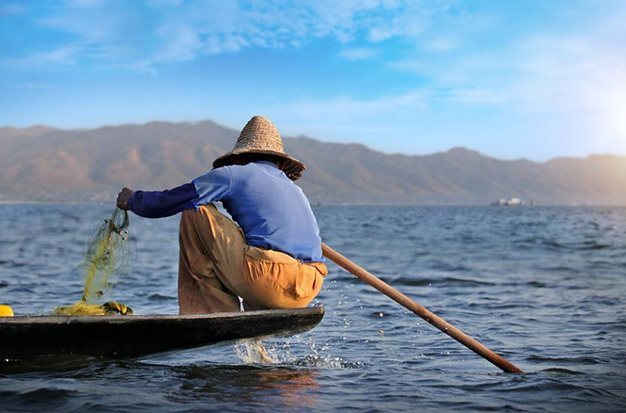
Methods Of Fishing By Canoe
Compared to fishing from a boat, canoe fishing is very different. Anglers have greater mobility and access to more secluded, rarely fished waters thanks to canoes. Canoes, on the other hand, are more constricted, so caution must be taken to maintain balance on the seats while casting, battling, or landing a fish. Essentially serving as the “guide,” the stern paddler is responsible for keeping the boat under control. The stern paddler executes by back-paddling or “sculling” because wind plays a role in controlling a canoe.” This is done by holding the paddle close to the blade and “locking” the shaft against the body, just behind the elbow. This gives the stern paddler more control over the boat while also freeing up a hand to hold his fishing rod. Veteran canoe anglers carry 50 feet of nylon line that can be anchored to a rock by lashing it to it. The anchor can be dropped and the canoe positioned off the edge of a weed bed, sunken bar, or rock pile, allowing both anglers to conduct serious fishing without being hampered by the wind. There is never a shortage of “anchors” because Northern Tier operates in rocky terrain.”
Most single-hook lures are used by knowledgeable anglers. Lead-headed jigs may be strengthened by adding plastic “twister” bodies that come in a range of colors. Additionally, single spinners can be included as additional attractor devices. All of the game fish in the Northern Tier region can be caught with single hook lures, which are also the safest to use when casting or landing a fish. A large tackle box is not necessary because many of them can be carried in a pouch or plastic bag.
How Can I Set Up A Canoe For Fishing?
Keep your equipment straightforward and minimal. Just the tackle and equipment you know you’ll use should be brought. For instance, if you want to catch smallmouth bass, leave your large tackle box full of muskellunge lures at home.
Take into account the water’s conditions when rigging a canoe for fishing. There are two fundamental canoe rigs: diamond and gravity. A gravity rig may be all you need if you are an experienced angler in calm waters in a wide canoe with little risk of tipping over, but when learning how to fish from a canoe, most anglers choose a diamond or hybrid rig that prevents loose objects from noisily rolling around the canoe.
Additionally to your rig, secure any unused canoe fishing equipment with waterproof dry bags or gear cases. In this manner, if your canoe tips, your gear will stay dry and you won’t lose anything at the bottom of a lake or stream.
Think about equipping your canoe with a motor or an anchor for increased stability and control.
What Can I Do To Increase The Comfort In My Canoe?
Knee pads can be installed inside the canoe to make paddling more comfortable. By extending one leg in front and bending their knees to the side, some paddlers will sit while kneeling. If you know how to paddle properly, it can be a lot of fun in addition to being a great way to get outside and enjoy the outdoors.
Five Tips For Fishing From A Canoe
These small, lightweight boats are easy to transport with a roof rack or trailer, making them perfect for scouting out new fishing locations. Before setting out to try fishing from a canoe for the first time, there are a few canoe fishing tips you should bear in mind.
The first step in learning to fish from a canoe is to abide by all safety instructions. Bringing a friend with you is one of the most crucial things for beginners. This way, you can alternate paddling and fishing duties and have extra assistance if you encounter any currents or tires on the way back.
Each time you go out in a canoe, put on a personal flotation device (PFD) and keep it there until you get back to land. A PFD that fits properly should be worn by everyone who joins you for a day on the water.
To prevent tipping, maintain balance while in the canoe. This is particularly crucial to keep in mind when casting, battling, or reeling in fish. Recall that a canoe can tip more easily if it is designed with a narrower width. Wide enough to provide plenty of stability, the ideal canoe for fishing will be this way. Here is where the setup for your canoe fishing trips can make or break them.
Do your best to approach these types of fishing spots as quietly as you can if you are fishing from a canoe in clear or shallow waters. Fish are easily scared away in these circumstances by sudden or loud noises. Keeping your canoe from being disturbed by your paddle or any other objects is also important.
You can troll a spoon behind your canoe while paddling between fishing spots and try to catch fish like lake trout, northern pike, or walleye. For the greatest likelihood of landing a bite, cast near any vegetation or structures when you locate a good spot.
Conclusion
When learning to fish from a canoe, safety on the water is the most crucial thing to keep in mind. When learning to fish, think about taking a boating safety course first because each state has its own set of safety regulations that recreational boaters and paddlers must abide by. Be careful and enjoy yourself!

